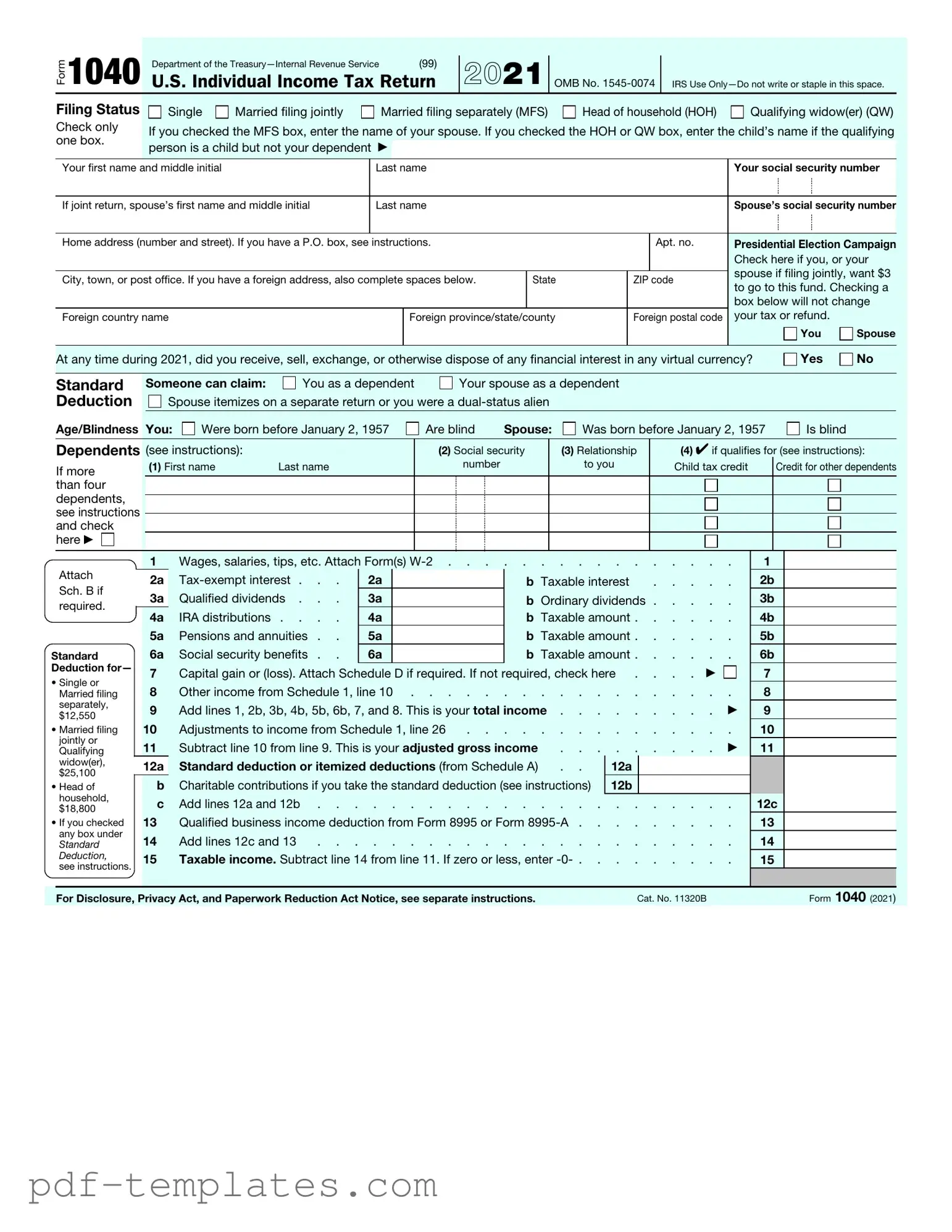The IRS 1040 form is similar to the IRS 1040A form, which is a simplified version of the standard 1040. The 1040A allows taxpayers to report income from wages, pensions, and interest, but it does not accommodate itemized deductions. Instead, it provides a straightforward way to claim the standard deduction and certain tax credits, making it ideal for those with less complex tax situations.
Another document that resembles the IRS 1040 is the IRS 1040EZ form. This form is even more streamlined than the 1040A and is designed for single or married taxpayers filing jointly with no dependents. The 1040EZ allows for basic income reporting and is limited to those with taxable income below a certain threshold. Its simplicity is appealing to individuals who have straightforward tax situations.
The IRS Schedule C form shares similarities with the 1040 in that it is used to report income or loss from a business operated by a sole proprietor. While the 1040 captures the taxpayer's overall financial situation, Schedule C specifically details business earnings and expenses. This allows for a comprehensive view of both personal and business finances when filed together.
Form 1099 is another document that is related to the 1040. This form is used to report various types of income other than wages, salaries, and tips. Freelancers and independent contractors typically receive 1099 forms from clients. Taxpayers must include this income on their 1040, making the 1099 an essential component of the overall tax filing process.
The IRS Schedule A form is akin to the 1040 in that it allows taxpayers to itemize deductions. While the 1040 captures total income and tax liability, Schedule A breaks down specific deductions such as mortgage interest, medical expenses, and charitable contributions. This form is crucial for those who wish to maximize their deductions beyond the standard deduction available on the 1040.
Form 4868 is another document that relates to the IRS 1040, as it is used to request an extension for filing individual income tax returns. While it does not directly impact the content of the 1040, it allows taxpayers additional time to prepare their return. Filing Form 4868 grants an automatic six-month extension, providing relief for those who need more time to gather their financial information.
The IRS W-2 form is also similar to the 1040 in that it reports income earned from employment. Employers provide W-2 forms to employees, detailing wages, tips, and other compensation, along with taxes withheld. Taxpayers use this information to complete their 1040, ensuring that all earned income is accurately reported and taxed.
Understanding the nuances of various tax forms is crucial for accurate reporting, just as familiarizing oneself with specific documents like the California Agreement Room form is important for both landlords and tenants. This form outlines essential details, including rent and deposit conditions, similar to how tax forms detail income and liabilities. For further guidance, you can visit https://formcalifornia.com/.
Form 8889 is related to the 1040 for those who have Health Savings Accounts (HSAs). This form is used to report contributions to and distributions from HSAs, which can impact tax liability. Taxpayers must include the information from Form 8889 on their 1040 to accurately reflect their health savings activity and any associated tax benefits.
Lastly, the IRS Schedule D form is relevant to the 1040 as it is used to report capital gains and losses from the sale of assets. While the 1040 captures overall income, Schedule D provides the necessary details regarding investment transactions. Taxpayers who buy and sell stocks or other investments must use this form to ensure that their capital gains are reported correctly on their 1040.
